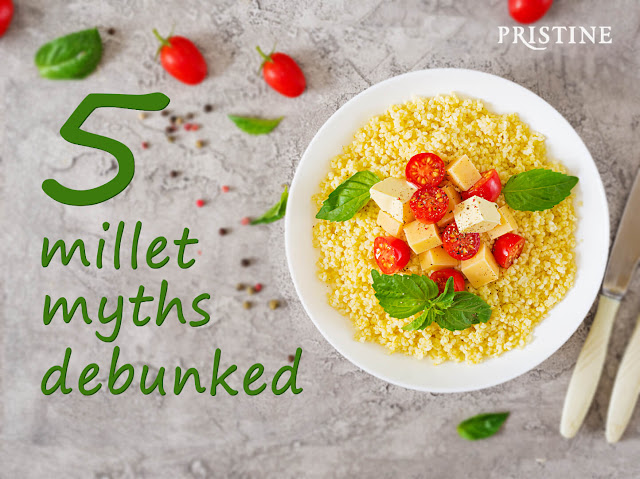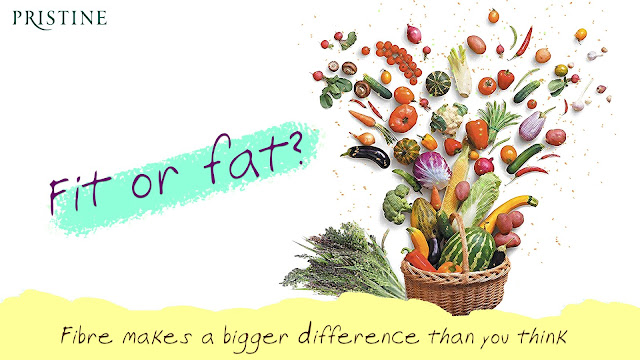Switch to healthy - What stops you from making your diet healthier?
Bajra, jowar, sama, varagu, ragi – some of these traditional millet names are already familiar to you. Many of you have eaten dishes cooked with them without knowing the different types and names of millet.
Each millet has its own strengths, Some like finger millet (ragi), are high in calcium, others, like sorghum (jowar) are imbued with potassium and phosphorus power.
Still skeptical about introducing them into your diet? Allow us to bust some commonly held myths about them:
Cooking with millet is difficult
The main deterrent to cooking millet is not its ease, or lack thereof, but ignorance about its usage. Earlier we bemoaned the lack of recipes, but today that’s no longer an issue. The easiest way to cook millet is to take your regular every day recipe, and just substitute millet for rice and other grains. Which means you can use millet to make upma, rotis, use it instead of rice, couscous or quinoa, add it to salads, main dishes and desserts. The possibilities are endless. Take a look at our recipe section to get started.
Millet is not as tasty as rice or wheat
It’s easier to blame the millet than the cook, but have you really given it an honest go? Saying your children won’t like it is another lame excuse. If a dish looks good and smells good, your kids will definitely try it! Use your normal recipes, substitute millet for rice, add fresh, colourful veggies to make your dish healthier and prettier, and see how the aroma draws them in. We promise the taste will keep you hooked.
Millet is a new-fangled fad
In this age of super food trends, millet is showing up on various blogs and lists, but you should know that it’s not new to the nutrition stakes. Millet is one of the oldest edible grains known to man. It has been around since prehistoric times, is mentioned in the Bible, in the ancient Yajurveda texts and has been a staple in China, Korea, Africa and India since millennia. There’s even evidence of its use in the Harappa civilization. Just hark back in your memory and you will find millet showing up in all our regional cuisines: think ragi mudde, jolada roti, bajre ki khichidi…all millet. Check this blog for more on millets – more info, how to cook, what to eat with.
Millet causes thyroid
Each millet is vastly different, and only two of them contain flavonoids in a form that might affect thyroid metabolism, and that if the consumer is also deficient in iodine and has an underlying thyroid disorder. The two millet in question – bajra (pearl millet) and in relatively smaller amounts, ragi (finger millet) have been consumed in local rural and adivasi/aboriginal communities for generations with no reports or anecdotes mentioning endemic goitre. What’s more, the presence of beneficial anti-cancer and anti-aging anti-oxidants in millet, far outweigh the extremely minuscule danger of hypothyroidism.
Millet is a poor man’s food
Millet is a healthy and traditional option to polished grains. If it gives nutrition to farmers who spend their day in highly intense activity, is hardly relevant. The amount grown these days has reduced, since the ‘refined’ foods of the West became more popular, and earlier state policies favoured rice and wheat over indigenously grown millet. The canny farmer still continues to grow the millet that gives him health and strength.
To us, that sounds like a great idea!
Check out below some of the millet recipes to get started




Buy organic basmati rice online Nimbark organic brings you pure organic foods products that are cultivated in the Himalayan foothills.
ReplyDeleteBuy High-quality organic food products brand Nimbark Foods offers a wide range of organic products that are fertilizer-free, good for nature, good for health.
ReplyDeleteNimbark Foods offers Organic grocery online You can choose from a wide range of pure organic grocery products that are produced in the foothills of the Himalayas without the use of pesticides and fertilizers.
ReplyDeleteNimbark brings you best Organic Food Products for your good health. Their produce is nourished by fertile mineral-rich soil of the Himalayans, organic manure and snow melted waters from river Chenab.
ReplyDelete